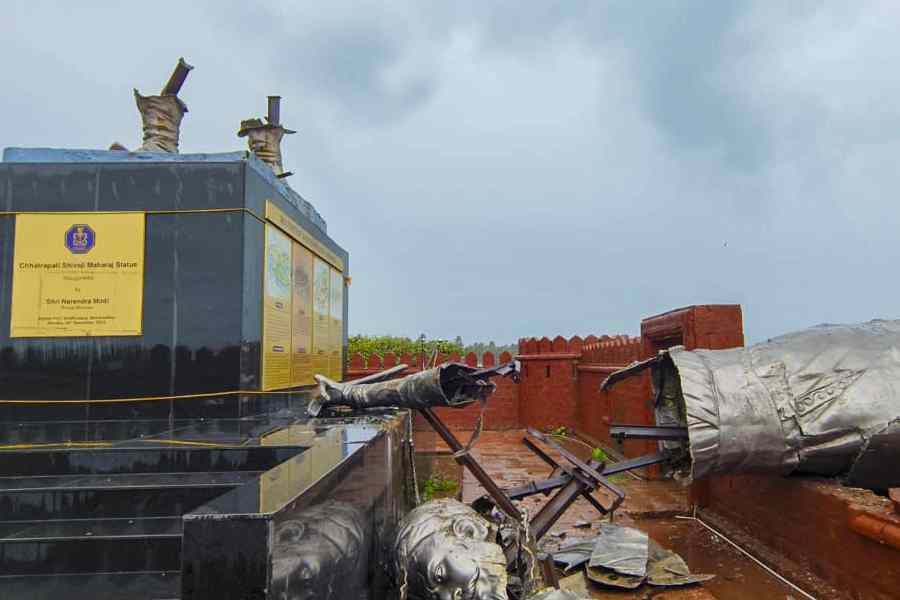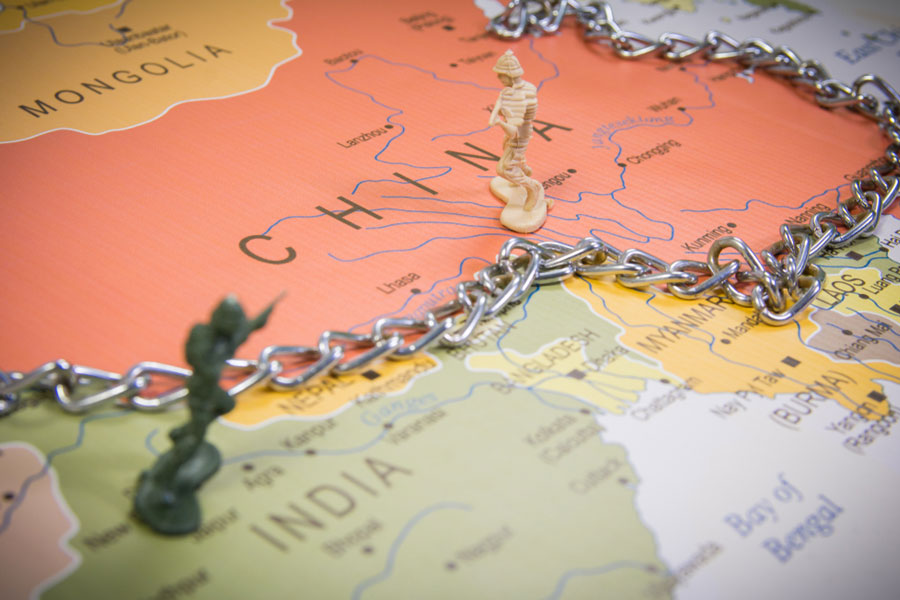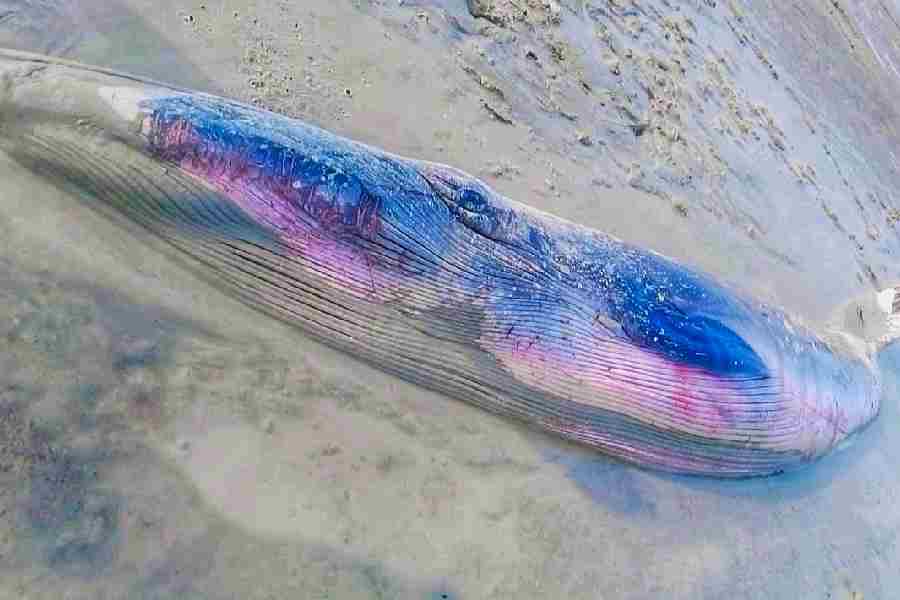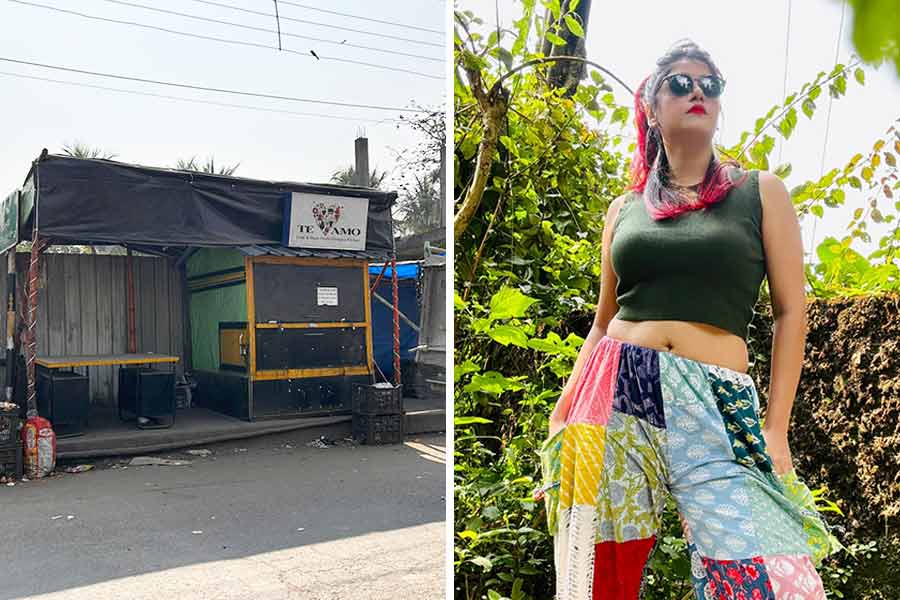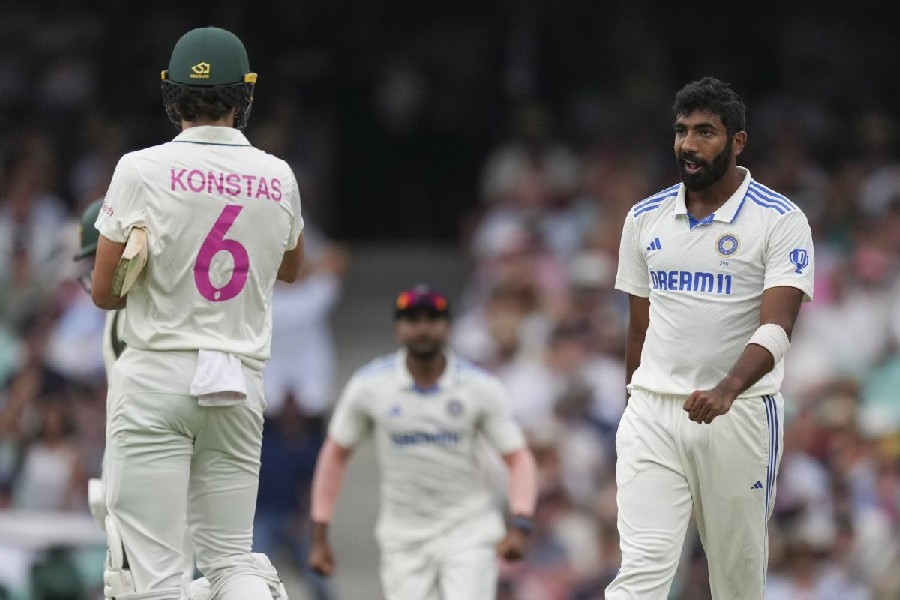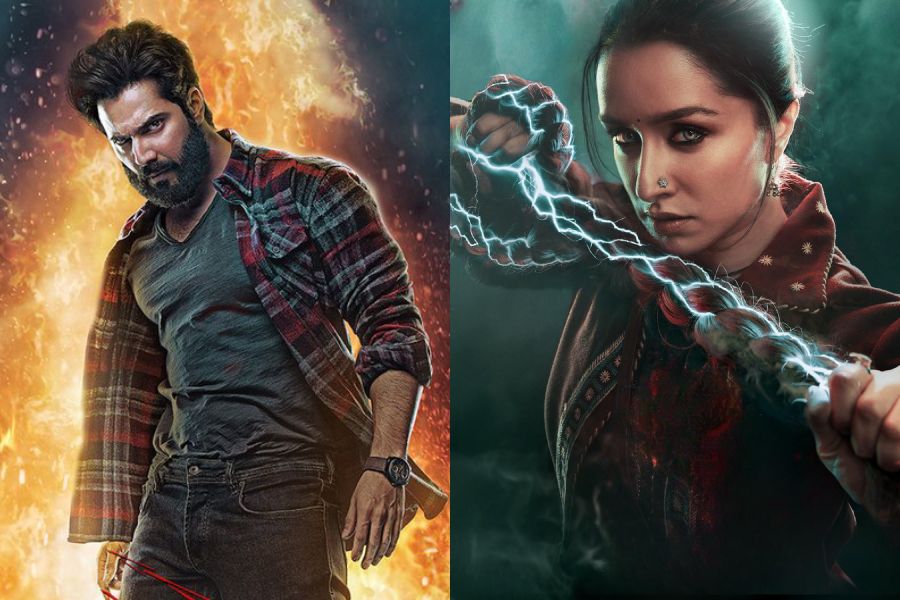When Prime Minister Narendra Modi was in Maharashtra, he publicly apologised for the collapse of the statue of Chhatrapati Shivaji at Malvan’s Rajkot Fort on August 26. The embarrassing episode, coming just before the state assembly elections, has become a major political issue, with both the Maharashtra chief minister and his deputy apologising for it. The Maratha ruler has been an emotive issue in the state’s politics, both for the state parties harping on subnationalist pride and the Hindu nationalist parties like the Bharatiya Janata Party, which have reduced Shivaji to a Hindu icon.
The reasons for the collapse of the 35-feet-tall statue, which was inaugurated by Modi last December during the annual Navy Day celebrations, are being probed by the joint technical panel of the Indian navy and the state government. The Indian navy celebrates Navy Day every December 4 to commemorate “Operation Trident”, the navy’s audacious attack on Karachi harbour during the 1971 war with Pakistan. The choice of Sindhudurg fort as the site for the celebration was unusual. It was the first time that the Indian navy organised a mega event, involving the participation of 20 warships along with 40 aircraft and a demonstration by the Marine commandos, which was not taking place at any major naval station.
The idea of taking the celebrations outside of the major naval bases is commendable, though questions remain if the logistics and the administrative load of event management at such a scale are worth the time and the resources of the navy. At that time, government sources had claimed that “the thought behind conducting the Navy Day celebrations in Sindhudurg, Maharashtra, is also because the year 2023 marks the 350th year of King Shivaji’s coronation.” The reasoning was odd because the Indian navy boasts of no connection with Shivaji and has never claimed his inheritance as a builder of a modern navy. The Chola empire would lay a much stronger claim for being the forebearers of the Indian navy but that is a state where the BJP has a meagre electoral base.
In fact, the Indian navy is purely a British colonial creation and was the last of the three defence services to be manned by British officers — till 1958, eleven years after India’s independence. Its traditions and norms as a professional force were inherited from the British and have held the institution in good stead. The earlier BJP-led government of A.B. Vajpayee changed the naval ensign in 2001 when the Indian navy was using a modified version of the British naval ensign, which had the St. George’s Cross, but with the Indian Tricolour in the canton. It was replaced with a white ensign bearing the Indian navy crest and the red St. George’s Cross was removed. Soon, it was found that the new ensign was indistinguishable as the blue of the naval crest easily merged with the sky and the ocean and in 2004, the naval headquarters recommended the return of the St. George’s Cross. In 2014, the ensign and the naval crest were further modified by adding the national motto, Satyameva Jayate.
In 2022, the Indian navy thought it was time to go for another change, flowing with the Modi government’s stated objective of moving away from the colonial past. (The Hindu Right considers the Indo-Islamic rule also as colonial, with Modi himself mentioning “1000 years of slavery” from many forums.) A new naval ensign was unveiled by Modi. The Indian navy did not stop at it. In the Naval Commanders Conference next year, the highest forum for decision-making about the organisation, mannequins wearing kurta pyjamas as the new mess dress were paraded before the defence minister. The media was courted to give wide publicity to these pointless political moves at a time when China’s People’s Liberation Army Navy had become the largest navy in the world, ahead of the navy of the United States of America, and Agnipath, a short-term contractual scheme for the recruitment of soldiers, was being imposed upon the armed forces.
Among the three defence services, the language and the priorities of the then navy chief, Admiral Hari Kumar, seemed most attuned to the ideological imperatives of Modi and the BJP. The justification may have been ‘moving away from the colonial past’ but the real motivation was political. It was no surprise then that Kumar chose Sindhudurg fort for the Navy Day celebrations in 2023, months before the national polls. Even if this was borderline explicable, the decision to have the Indian navy erect a 35-feet-tall statue was beyond any justification.
As reportage has since shown, the navy chose to erect the statue after taking money from the state government. It appointed a sculptor and a consultant for the project and the design that was finalised was based on a clay model that was to be six feet high. Maharashtra’s Directorate of Art was neither informed of the increased height nor did it know that steel plates would be used in the structure. In fact, on August 20, six days before the statue fell due to strong wind, the state PWD had written to the navy about the rusting of the nuts and bolts of the statue.
After the politically costly disaster, the state government has washed its hands of the fiasco, leaving the mess at the door of the Indian navy. The Indian navy has no cogent explanation as to why it chose to undertake a project it is not meant to execute. Other than the desire to provide a political photo-opportunity for Modi and to be seen as fully aligned with the Hindutva ideology, there was no operational reason to erect the Shivaji statue.
The Indian navy has enough operational challenges — like the depleted strength of its fleet, vintage equipment, lack of modern weaponry, a delay in the acquisition of submarines, no approval for the third aircraft carrier, and the induction of Agnipath — to waste its meagre resources on fulfilling political tropes and cheap theatrics. The armed forces should not volunteer to be used as an instrument of vote-bank politics of the ruling party. In fact, they should flatly refuse any unmilitary activity when asked to do so by the political leadership. As the statue debacle demonstrates, the returns are only for the politician while the armed forces are left to carry the can for them with egg on their pristine uniform.
Sushant Singh is lecturer at Yale University

